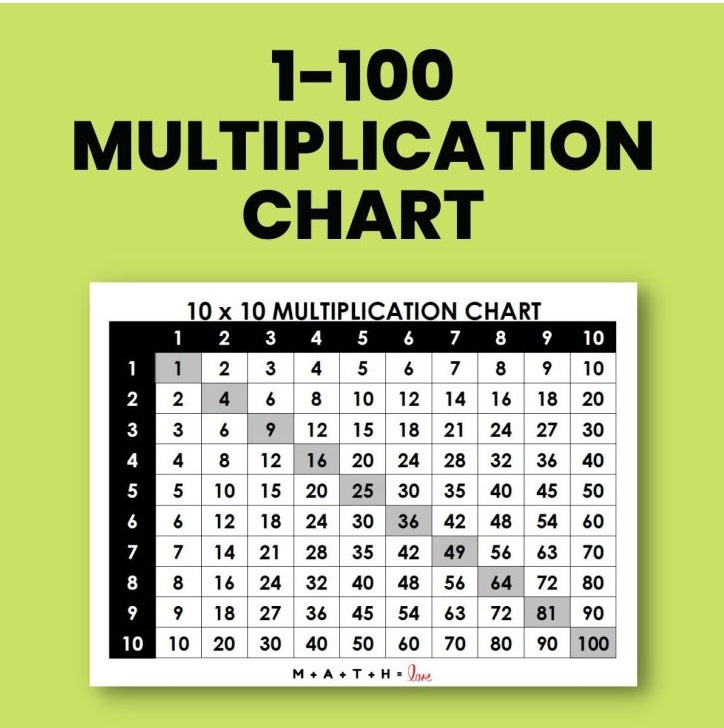Mathematics is a universal language, and at its core lies the concept of multiplication. While smaller multiplication tables, such as 1-12, are great for beginners, a 1-100 multiplication chart offers a more expansive view, suitable for advanced learners and enthusiasts who want to explore deeper patterns in numbers.
What Is a 1-100 Multiplication Chart?
A 1-100 multiplication chart is a grid that displays the products of numbers from 1 through 100. It provides an extensive reference for multiplication, making it a powerful tool for students, educators, and even professionals who deal with numerical data regularly.
Here’s how it works:
- Numbers from 1 to 100 are arranged along the top row and the leftmost column.
- The intersection of any row and column shows the product of the corresponding numbers.
For instance, the intersection of row 25 and column 4 will display 100, because 25×4=10025 \times 4 = 10025×4=100.
Why Use a 1-100 Multiplication Chart?
- Comprehensive Learning:
A chart that spans up to 100 expands beyond basic multiplication tables, catering to learners who are ready for more advanced practice. - Pattern Recognition:
With a larger dataset, patterns in numbers become even more apparent. For example, diagonal entries (like 2 × 2, 3 × 3, etc.) show perfect squares. - Real-World Applications:
Large-scale multiplication is often needed in fields like finance, engineering, and computer science. A 1-100 chart lays the groundwork for understanding these larger calculations. - Preparation for Competitive Exams:
Competitive exams and advanced mathematics often require quick mental calculations. Practicing with a 1-100 chart can enhance speed and accuracy.
Tips for Using a 1-100 Multiplication Chart
- Break It Down: Focus on smaller sections of the chart at a time to avoid feeling overwhelmed.
- Highlight Multiples: Use colors to mark multiples of specific numbers (e.g., highlight all multiples of 7 in green).
- Practice Squares: The diagonal cells represent perfect squares. Memorizing these can improve your number sense.
- Challenge Yourself: Cover parts of the chart and try to recall the hidden products.
Creating Your Own 1-100 Chart
While printable and digital versions are readily available, making your own chart can be a rewarding exercise. Use a spreadsheet or graph paper, and fill in the products systematically. This hands-on approach reinforces learning and helps you become more familiar with the chart.
Beyond Memorization
While the chart is an excellent tool for rote learning, understanding the “why” behind multiplication remains essential. Think of multiplication as a shortcut for addition. For instance, 8×128 \times 128×12 is the same as adding 8 twelve times.
Final Thoughts
The 1-100 multiplication chart is more than a learning tool—it’s a window into the fascinating world of numbers. Whether you’re a student, a math enthusiast, or a professional looking to refine your numerical skills, this chart provides endless opportunities for exploration and practice.
So, why not dive in and see what patterns and possibilities you can uncover? Let us know in the comments how a 1-100 multiplication chart has helped you!



Leave a Reply